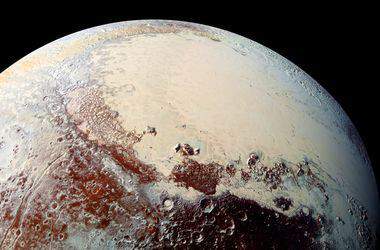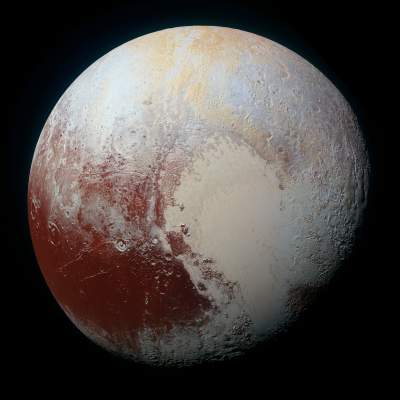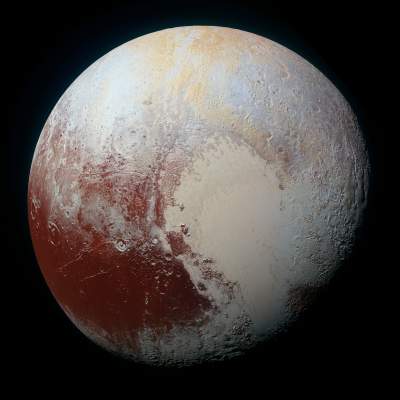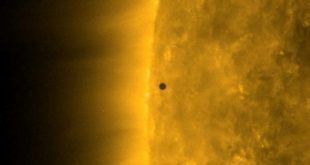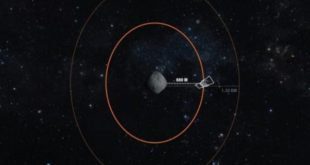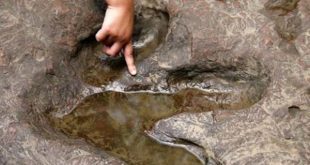 The picture shows a dark mountain site.
The picture shows a dark mountain site.
The us space Agency NASA showed images obtained with the automatic interplanetary station NASA New Horizons, which gives an increase in the South-Eastern part of the vast icy plains of Pluto.
Right at the bottom is the scalloped border of the plains, dark hills, informally known as the Macula Wheel. (KRUN – the master of the underworld in the mandaic religion, the macula is the dark area on the surface of the planet.)
It is believed that Pluto gives a deep red tone tolin, complex molecule that is found in most parts of the surface of Pluto. The macula Wheel rises to 2.5 km above the surrounding plain, informally known as the plateau of the Satellite; the macula is all indented groups United rounded holes, which reaches from 8 to 13 km in diameter and 2.5 km in depth.
At the border of the plateau of the Satellite holes form deep hollows, covered with nitrogen ice and reaching a length of 45 km, 20 km wide and almost 3 km deep, which is almost 2 times deeper than the Grand canyon in Arizona. Working on the project “New horizons” scientists believe that these depressions could be formed as a result of the failure surface, however, remains a mystery, what could cause such failures.
See also: NASA released detailed images of Pluto. Video
A composite image was created based on images obtained from three individual observations made by New Horizons in July 2015. The resolution of the right side of the image is 80 meters per pixel; picture made with camera Long Range Reconnaissance Imager (LORRI) at a distance of 15 850 km from Pluto in 23 minutes before closest approach, New Horizons to Pluto. The resolution of the left portion of the composite image is 125 meters per pixel; the image was taken 6 minutes before the first from a distance of 24 900 km from Pluto.

